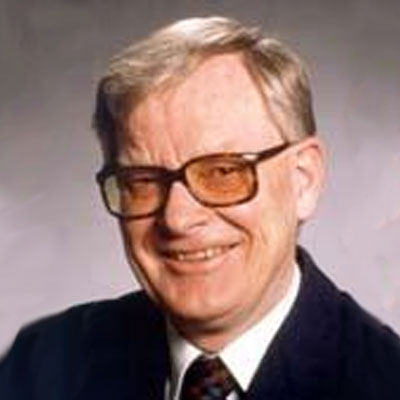heading
1992: Dept. of Environmental Engineering, Technical University of Denmark
Under the leadership of Professor Poul Harremoës

In August 1992, the Prize ceremony in Stockholm was attended by a substantial proportion of the staff of the Department of Environmental Engineering at the Technical University of Denmark.
Its head since 1969, Professor Poul Harremoës (1934 – 2003), received the Prize on the department’s behalf.
The successes of this department in its various areas of work stemmed from a collective effort, underpinned by a climate of creativity. In 1969, the department had a staff of one. By 1992, the number had risen to 50, and the Prize acknowledged that the department’s achievements were the fruits of constructive and far-reaching collaboration among a group of individuals working towards the same goal – under the influence of an inspiring leader, Poul Harremoës.
Those achievements encompassed several different fields of water treatment. What distinguished the Department of Environmental Engineering was the depth of its research in all these different fields. Mathematical models were developed and applied all over the world. In addition, considerable effort was put into teaching and training a new generation of experts.
The department contributed significantly to our understanding of pollutants in groundwater and to the development of tools to safeguard this vital resource. Abatement of pollution from urban storm drainage and combined sewer overflows was also high on its list of priorities. Fundamental theories were developed concerning nitrogen removal processes in activated sludge and wastewater.
When we launched this research project on nitrogen in the early 1970s, not many people believed in it, either technically or in terms of feasibility. But it proved to work, throughout Scandinavia and then across Europe. As pioneers who refused to give up, we managed to make a number of important contributions, said Professor Harremoës at the time.
The results generated technologies that are now being used in wastewater plants all over the world. By the time the department was awarded the Stockholm Water Prize, some five hundred new treatment plants had been planned for Scandinavia up to the year 2000, combining processes to remove both phosphorus and nitrogen from wastewater.
The research carried out on metals in wastewater sludge showed sludge to be a minor contributor of metals to agricultural land, compared with the much larger inputs from fertilisers and the atmosphere.
The department was at the forefront in enhancing our understanding of the need for an integrated approach to the total system: sewerage, wastewater treatment and receiving waters.
To summarise the citation for the award, the department received the Prize for its research and development programme, its scientific approach, its international collaboration with the water industry in search of practical applications, and its contributions to water pollution abatement, in Scandinavia and worldwide.
The Institute of Environment & Resources, as it is called today, headed by Professor Mogens Henze, is one of the leading and largest environmental engineering university institutes in Europe, with a staff of 90 scientists and 40 technicians. Twenty-five per cent of the staff is international researchers. New significant activities at the Institute since 1992 are in solid waste management, groundwater geochemistry, ecotoxicology and remediation of contaminated sites. The Institute has a unique flat research and teaching structure where the faculty can float freely between research areas. This allows it to develop new cross disciplinary activities on the boundaries between single specialisation. Since 1995, teaching at the master level has been in English, and 80 master students graduate each year.